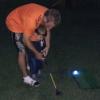Operation: Beat SLDR
-
Who's Online 36 Members, 0 Anonymous, 662 Guests (See full list)
- namcneil
- Josh Ross
- CSiders12
- garethlow
- BeardedBlunder
- KC Golf
- RoyN
- William P
- hoppman
- GolferWithStyle
- domstriker
- Michael.Sandoval33
- Indy_Oz
- TylorJudd
- NotScratchYet
- Dubsee
- HeathS16
- Big Deal Walsh
- rlb4
- SteveGH7
- snicerz
- griecot313
- azstu324
- Joker67
- EMacK1961
- Hunting4birdies
- GolfSpy_APH
- Dead Solid Bogey
- mikeanthony
- JIngram04
- Splatt
- pablogomezpt
- Mcdecaf
- MissionMan
- Rob Person
- luda


Recommended Posts
Join the conversation
You can post now and register later. If you have an account, sign in now to post with your account.